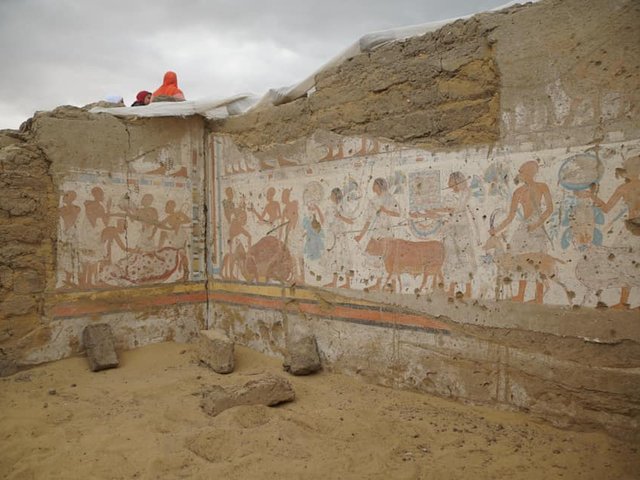An ancient Egyptian funerary figurine with disparate links to “the curse of Tutankhamun” and to the British screen drama, Downton Abbey, went on permanent display yesterday at its new home, Sydney University’s Chau Chak Wing Museum.
The 25cm-long painted wooden “shabti” figure represents Senseneb, a woman who lived in the 18th Dynasty (around 1550BC). Her son Tetiky, while not royal, was a top-ranking administrator in the pharaoh’s court.
A spell from the book of the dead is painted on Senseneb’s shabti in hieroglyphics, and her nickname Seni is also written on her chest and on her miniature coffin. Her face and hands are painted gold.
Candace Richards, the curator of the Nicholson Collection of antiquities at the Chau Chak Wing Museum, says the shabti was donated to the museum earlier this year by the owner Suzanne Harris, who lives in the Blue Mountains west of Sydney.

The Senseneb shabti Courtesy of Sydney University
How the shabti came to be in Harris’s possession is a rollicking tale.
The shabti was discovered in 1908 by the British nobleman, the 5th Earl of Carnarvon, while he was leading an excavation at the tomb of Tetiky in Thebes. Also working on the excavation was Howard Carter. Together, the two men sensationally discovered the tomb of Tutankhamun in 1922.
Lord Carnarvon took the shabti and many other artefacts back to his stately home an hour and a half’s drive west of London in Berkshire. (Downton Abbey, the high-rating historical drama, was filmed at Highclere Castle.)
Carnarvon died in 1923, setting off the legend of “the curse of Tutankhamun” which was supposed to beset anyone who had disturbed the mummy’s tomb. About 1,400 of Carnarvon’s Egyptian items were subsequently sold to the Metropolitan Museum of Art in New York. But Lord Carnarvon’s descendant, the 6th Earl, was not interested in Egyptology and about 300 of the lesser items in the 5th Earl’s collection were boarded up in Highclere and all but forgotten.
In 1904, a Prague-born man named Maximilian Pollack, who changed his name to Preston, came to Australia where he spent the First World War as an enemy intern in Sydney. In 1926 Preston and his family moved to the UK where Preston bought a cupboard from the Carnarvon estate in a Sotheby’s auction.
Finding half a dozen Egyptian artefacts inside the cupboard, Preston returned them to Sotheby’s. The sixth Earl rewarded Preston’s honesty by gifting him the Senseneb shabti, along with the lidded coffin that had been made for it.
Within a year or so of being given the shabti, the Prestons moved to Johannesburg in South Africa where Preston died in 1937. His descendants moved to Australia where they have lived ever since. The story of the shabti was passed down through the family to Harris, Preston’s granddaughter, who decided to donate it to the museum.
“She wanted to put it somewhere that it can be looked after and shared. When she contacted me she said, ‘we’ve had it put away for a while, so I got it back out’,” Richards says.
The other items stored away and forgotten by the sixth Earl—and only uncovered after his death in 1987 when the butler recalled the collection’s existence—are now on view at Highclere Castle, Richards says.






